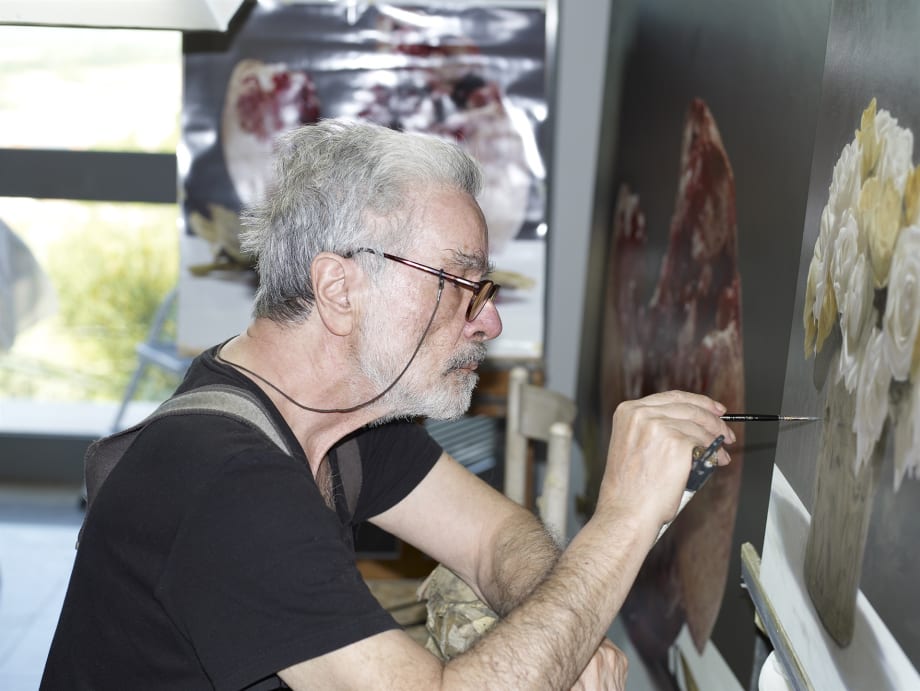Born in 1942, Luciano Ventrone lived and worked in his native Italy. His paintings 'invite a mood of pure contemplation'; they are works of masterful skill and supreme aesthetic beauty. Though he admited to sharing a strong affinity for the work of Caravaggio, Ventrone did not consider himself a realist painter in the traditional sense. Ventrone's works have been exhibited in over twenty museum shows globally, such as the Museo delle Genti d’Abruzzo, Museo civico e Pinacoteca, Museum of Modern and Contemporary Art of Trento and Rovereto, Musei di San Salvatore in Lauro, and at the 54th Venice Biennale at the Italian National Pavillion.
He painted real objects but, because of his utilisation of certain contemporary techniques as part of the artistic process, the objects depicted are transported into a metaphysical, hyper-real context. What we see in a Ventrone painting is not 'real' because it is not what we would see were we to look with the naked eye - we see more. Ventrone's works show us things more fully and more clearly than they appear to us in reality; everything is in focus, everything can be scrutinised. The paintings allow us to notice every blemish and admire every curve of flesh in a piece of fruit or on a naked female form. Set against monochromatic backgrounds of white, grey or black, the subject is lit from multiple angles, allowing for a full and objective appraisal of what we behold.
The artist effected a forensic examination and meticulous rendering of fruit and flowers which form his subject. Fastidiously arranged and carefully lit, he revealed the simple, everyday beauty of cherry, grape, lemon and rose. He lavished his attention on describing rich and subtle colour and texture, articulated by a masterful representation of light. These paintings are bravura acts of technical accomplishment, which echo those of Caravaggio and the great Dutch still-life painters: Andreas Bosschaert and Jan Davidz de Heem.
Ventrone's pictures strive to locate the essence of his subject through the discipline of technique, artfully-structured composition and exclusive focus. At the same time he made images of succulent, mouth-watering materiality, almost hyper-real in their insistent pictorial immediacy. Ideas of control and appetite interplay: we are caught between discipline and desire, our hunger provoked, all too aware that we are viewing a vividly realistic illusion.
The very act of representation points to the fact that the actual is absent. These images preserve and celebrate the object of desire, at the instant when it might be at its most desirable. A certain romantic melancholy accompanies Ventrone's skilful iterations. Well aware that such forms decay and their ripe appeal is transitory, the painter has fixed them in an ideal state; they are archetypes of unattainable perfection.
Similarly, Ventrone's depiction of broad, foaming seascapes harness this idealised moment. The detail and artistry evoke the sound, scent and touch of the water, leading the viewer down a familiar path of sensory recognition and visual exploration.
In his capturing of a moment, an interlude of stillness and calm, the artist revealed the tension between the real and unreal and our wish to make tangible that which eludes us.
